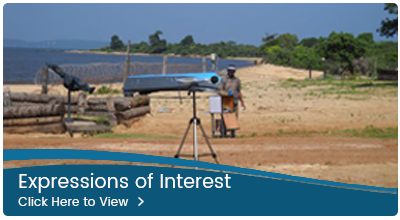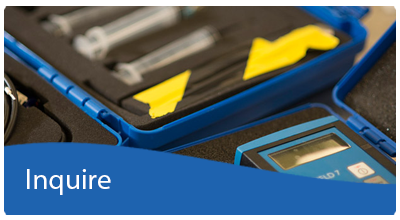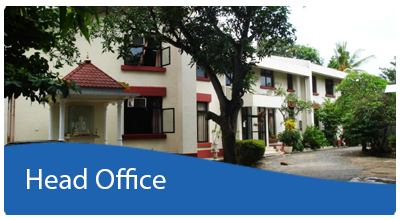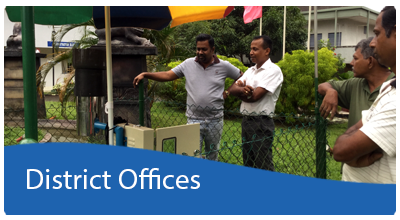- PULL-OUT BEHAVIOUR OF SQUARE-SHAPED GEOCELL REINFORCEMENT USING TWO-DIMENSIONAL DIGITAL IMAGE CORRELATION
- A STUDY FOR CALCULATAION OF EFFECTIVE RAINFALL THRESHOLD VALUES FOR THE INITIATION OF LANDSLIDES IN SEVERAL DIVISIONAL SECRETARIATS IN KALUTHARA DISTRICT, SRI LANKA.
- RECTIFICATION OF ROAD CUT FALIURES OCCERRED BETWEEN CULVERT 5/11 AND 5/13-A: A CASE STUDY FROM DEHIOVITA-DARANIYAGALA-NOORIYA ROAD IN KEGLLE DISTRICT.
- DETERMINATION OF THE CRUCIAL TERRAIN FACTORS ON THE PROGRESSION OF GALABADA LANDSLIDE IN RATHNAPURA DISTRICT, SRI LANKA.
- IDENTIFICATION OF SUBSERFACE CAVITIES IN MARBLE-A CASE STUDY FROM VIJAYA SRI GAMA AREA, DIGANA, KANDY.
- SLIP SURFACE SOIL MINERALOGY WITH REFERENCE TO THE LANDSLIDES AT HAGGALA, NUWARELIYA AND KETAWALA, BADULLA, SRI LANKA.SLIP SURFACE SOIL MINERALOGY WITH REFERENCE TO THE LANDSLIDES AT HAGGALA, NUWARELIYA AND KETAWALA, BADULLA, SRI LANKA.
- MORAWAKKANDA LANDSLIDE-GEOLOGY AND SOIL PROPERTIES.
- AN ECOLOGICAL STUDY IN ARANAYAKE LANDSLIDE, SRI LANKA FOR BIOENGINEERING PURPOSE.
- ADAPTATION OF GPR TECHNIQUE IN IDENTIFICATION OF SLIP SURFACES OF LANDSLIDES.ADAPTATION OF GPR TECHNIQUE IN IDENTIFICATION OF SLIP SURFACES OF LANDSLIDES.
- R.M.G.Rajapakse, J.S.H.Q.Perera, and H.D.S.Premasiri, “Mechanism of electron transfer between L-Ascorbic Acid and Pt disc electrode in queous medium” Proc. Sri Lanka Assoc. Adv. Sci. 51, 1995, 415.
- R.M.G.Rajapakse, and H.D.S.Premasiri, “Electrochemistry of paracetamol in aqueous medium” Prec. Annual Research session, Faculty of Science, 1995, 12.
- R.M.G.Rajapakse, and H.D.S.Premasiri, “ Determination of the N-Acetyl-para-Aminophenol content in paracetamol containing Drugs” Proc. Chemistry in Sri Lanka. 13, 01, 1996, 08.
- R.M.G.Rajapakse, H.M.N.Bandara and H.D.S.Premasiri, “Polyaniline as an electrocatlyst for L-Ascorbic acid oxidation” Proc. Sri Lanka Assoc. Adv. Sci. 52, 1996, 185.
- R.M.G.Rajapakse, A.D.L.Chandani, H.M.N.Bandara, N.L.W.L.Kumarasiri, L.P.P.Lankeswara and H.D.S.Premasiri, “Novel Liquid Crystal Display Devices Based on Functionalised Glasses” Prec. Annual Research session, Faculty of Science, 1996, 01.
- R.M.G.Rajapakse, and H.D.S.Premasiri, “ Novel Gas Sensor Based on Polyaniline” Proc. Sri Lanka Assoc. Adv. Sci. 53, 1997, 343.
- H.D.S.Premasiri, R.M.G.Rajapakse, H.M.N.Bandara, D.T.B.Tennakoon, and J.S.H.Q.Perera “Polyaniline Coated Glass Plates as a Novel Gas Sensor” Proc. Annual Research Session, University of Peradeniya, 1998, 100.
- R.P.Samarakkody, H.D.S.Premasiri “Trends of air pollution in Colombo”, Newsletter, Clean Air, AirMAC, Ministry of Forestry and Environment, 01,June 2001, 08 – 09.
- Samarakkody, R.P., Premasiri, H.D.S., Kumari, B.M.S.S., Dharmasena, N.P.,"Use of Passive Air Quality Monitoring Techniques for Regional Air Pollution Monitoring" submitted, International Conference on Relating the Environment to Regional development, to be held on 14th and 15th, September, 2002.
- Samarakkody, R.P., Premasiri, H.D.S., Annakkage, C.J.,"Is Particulate a Problem in Colombo" submitted to International Conference on Relating the Environment to Regional development, to be held on 14th and 15th, September, 2002.
- Premasiri, H.D.S., Samarakkody, R.P., Annakkage, C.J., Basnayake, G.B.M.A., "Particulate Pollution and Ratio of SPM:PM10:PM2.5 in Colombo Atmosphere" Proc. Sri Lanka Assoc. Adv. Sci. 59, 2003, 221.
- Samarakkody, R.P., Premasiri, H.D.S., and Kumari, B.M.S.S., "Change in Atmospheric Lead Levels in Colombo after Phasing out Leaded Gasoline in Sri Lanka" Proc. Sri Lanka Assoc. Adv. Sci. 59, 2003, 236.
- R.P.Samarakkody, H.D.S.Premasiri “Trends of air pollution in Colombo”, Newsletter, Clean Air, AirMAC, Ministry of Forestry and Environment, 01,June 2001, 08 – 09.
- Annakkage C.J. , Samarakkody R.P.S. Perera M.D.C, Premasiri H.D.S. " What will be the severity of the Problem of Air Pollution in Colombo City?, National symposium on Air Quality Management 2nd - 3rd December 2004. (25).
- Premasiri H.D.S., Perera M.D.C., Fernando A.T.R.., Annakkage C.J., "Eligibility of Passive Sampling Techniques for rural Air Quality Monitoring " National symposium on Air Quality Management 2nd - 3rd December 2004. (27).
- Samarakkody R.P.S., Premasiri H.D.S , Annakkage C.J., Basnayaka G.B.M.A "Identification of Critical and sinking areas in Colombo by means of spatial Air Quality Monitoring" National symposium on Air Quality Management 2nd - 3rd December 2004. (26).
- Perera M.D.C., Premasiri H.D.S , Fernando A.T.R., Basnayaka G.B.M.A "Trends of Air Pollution in the largest Industrial area in Sri Lanka" National symposium on Air Quality Management 2nd - 3rd December 2004. (20).
- Perera, G.B.S., Emmanuel, R., Premasiri, H.D.S., “Exposure to Aerosol Pollution and Reported Respiratory Symptoms among City Dwellers” Second National Symposium on Air Quality Management 17th March 2006. (01).
- Rajepakse, I., Jayasinghe, C., Premasiri, H.D.S., “Comparison Between Indoor and Outdoor Contaminant Levels of Intermediate Rise Office Buildings in Urban and Suburban Locations” Second National Symposium on Air Quality Management 17th March 2006. (08).
- Jayasinghe, C., Rajepakse, I., Premasiri, H.D.S., “Comparison of IAQ of Air-conditioned and Free Running Space in Office Buildings” Second National Symposium on Air Quality Management 17th March 2006. (09).
- Premasiri, H.D.S., Jayasinghe, C., Rajepakse, I., “Effect of Indoor Air Quality in Office Building on Occupant Illnesses Symptoms (Sick Building Syndrome)” Second National Symposium on Air Quality Management 17th March 2006. (10).
- Premasiri H.D.S., Fernando A.T.R., Perera M.D.C., Samarakkody R.P.S., Annakkage C.J., “Is Rainfall Intensity Playing a Major Role on Air Quality Levels in Colombo?” Second National Symposium on Air Quality Management 17th March 2006. (11).
- Perera, G.B.S., Emmanuel, R., Nandasena, Y.L.S., Premasiri, H.D.S., “Exposure to Aerosol Pollution and Reported Respiratory Symptoms Among School children in Segments of Urban and Rural Settings in Sri Lanka” Tired National Symposium on Air Quality Management, 28th September 2007. (01).
- Premasiri H.D.S., Fernando A.T.R., Perera M.D.C., Basnayake, G.B.M.A., Daniyel V.D., “Deterioration and Variation of Air Rescore in Colombo City” First National Symposium on Natural Resource Management, 29th-30th August 2009. (26).
- Premasiri H.D.S., Samarakkody R.P.S., Basnayake, G.B.M.A., Fernando A.T.R., Daniyel V.D., “Potential Air Pollution Hazard Risk Areas in the City of Colombo” National Symposium on “Creating Disaster Free Safe Environment” 12th November 2009. (39).
- Dias, A.A.V., Bhandari, R.K., “Preventing Water Ingress into Shear Zones of Earthslides by Geomembrances”, Proceedings of the 5th International Conference on Geo Textiles, Geomemberance and Related Products", Singapore, September 1994.
- Fernando, T.R.J., Cruickshank, R.D., “Importance of Geological Mapping in Landslide Hazard Zonation”, Proceedings of the International Conference on Landslides, Slope Stability and Safety of Infrastructure, Malaysia, September 1994.
- Kumarapeli, S.P., Abeykoon, A.W.W., “Topographic and Landform Analysis of Some Significant Sri Lankan Landslides”, Proceedings of the International Conference on Landslides, Slope Stability and Safety of Infrastructure, Malaysia, September 1994.
- Jayarathne, V.S., Jayarani, H.M., “Catchment Hydrology and Landsliding in Sri Lanka”, Proceedings of the International Conference on Landslides, Slope Stability and Safety of Infrastructure, Malaysia, September 1994.
- Tissera, C.H. De, Arambepola, N.M.S.I., Rajaratnam, K., “Management of Landslides in Sri Lanka — Some Topics for Future Research”, Proceedings of the Second South Asian Geological Congress, Colombo, January 1995.
- Bandari, R.K., Perera, M.P.K., Weerasinghe, K.M.,“Using GIS in Landslide Hazard Mapping at NBRO”, Proceedings of the First GIS User Group Conference, University of Peradeniya, Sri Lanka, April 1995.
- Bandari, R.K., Dias, A.A.V., “Rain Triggered Slope Movements as Indicators of Landslide Dynamics”, Proceedings of the Seventh International Symposium on Landslides, Norway, June 1996.
- Bandari, R.K., Kotuwegoda, V.P.P.K., “Consideration of Landslide Geometry and Runout in a Landslide Inventory”, Proceedings of the Seventh International Symposium on Landslides, Norway, June 1996.
- Arambepola, N.M.S.I., Pallewela, P.P.D.H., “Investigation of Kabaragala Rockfall cum Debrisflow”, Proceedings of the Sri Lankan Geotechnical Society Conference, Colombo, October, 1996.
- Bandari, R.K., Weerasinghe, K.M.,“Pitfalls in Subrogating Slope Maps for Landslide Hazard Maps”, Proceedings of the 17th Asian Conference on Remote Sensing, Colombo, November 1996.
- Arambepola, N.M.S.I., Pallewela, P.P.D.H., Kotuwegoda, W.P.P.K., “Rockfall cum Debrisflow at 2 km Post on Nawalapitiya — Dolosbage Road”, Proceedings of the 13th Annual Session of the Geological Society of Sri Lanka, February 1997.
- Dias, A.A. V., “Stability Attribute on Discrete Boundary Shear Strength of an Earthslide – Lessons from Watawala Earthslide, Sri Lanka” Proceedings of the Third Asian Young Geotechnical Engineers Conference, Singapore, May 1997.
- Ratnaweera,H.G.P.A., Weerasinghe, K.M., “Evaluation of Landslide Susceptibility using Fuzzy Sets”, Proceedings of the Third Asian Young Geotechnical Engineers Conference, Singapore, May 1997.
- Abeykoon, A.W. W., “The Use of Electrical Resistivity Method in the Study of Landslides”, Proceedings of the Natural Hazards in the Urban Habitat–CBRI Golden Jubilee Conference, India, November 1997.
- Arambepola, N.M.S.I., Pallewla, P.P.D.H., Bandara, R.M.S., “Landslide Hazards Zonation Mapping and Geo-Envorinmental Problems Associated with the Occurrence of Landslides” Proceedings of the Natural Hazards in the Urban Habitat–CBRI Golden Jubilee Conference, India, November 1997
- Weerasinghe, K.M., “Landslide Hazard Zonation Mapping using GIS”, Proceedings of the Second Indian Annual ESRI/ERDAS User Conference, New Delhi, India, December 1997.
- Arambepola, N.M.S.I., Weerasingha, K.M., Abeysinghe, A.M.K.B., “Statistical Fluctuations of Hazard Potential of the Factors Contributing to Landslide Risk”, Proceedings of the International Conference on Disaster Management, Guwahati, Assam, India, April 1998.
- Arambepola, N.M.S.I., Weerasinghe, K.M., “Towards Achieving the Long Term Objectives of Landslide Hazard Mapping Programme”, Proceedings of the Workshop on the Role of R & D Institutions in Natural Disaster Management, Colombo, Sri Lanka, September, 1998.
- Perera S., Weerasinghe, K.M., “Role of the Survey Department of Sri Lanka in Disaster Mitigation”, Proceedings of the Workshop on the Role of R & D Institutions in Natural Disaster Management, Colombo, Sri Lanka, September, 1998.
- Weerasinghe, K.M., “Synthesis of Factor Maps into an Integrated Landslide Hazard Map and its Degree of Reliability”, Proceedings of the International Workshop cum Training Programme on Landslide Hazard and Risk Assessment, and Damage Control for Sustainable Development, New Delhi, India, December 1998.
- Weerasinghe, K.M., Gunaratne, M., Ratnaweera, H.G.P.A., “Research Efforts Towards the Analytical Determination of Landslide Hazard Potential Indices”, Proceedings of the Workshop on Rain Induced Slope Failures, Colombo, May 1999.
- Weerasinghe, K.M., “Integration of Causative Factors for Landslide Hazard Zonation Mapping in Sri Lanka”, Proceedings of the International Conference on Disaster Management; Cooperative Networking in south Asia, New Delhi, India, November 1999.
- Abesinghe, A.M.B.K., Iwao, Y.,Gunathilake, J., Arambepola, N.M.S.I., “ Landslide Risk Assessment in the Central Highlands of Sri Lanka”, Proceedings of the 3rd Asian Symposium of Engineering Geology and Environment, Yogyakarta, Indonesia, pp 3-6, September, 2001.
- Weerasinghe, Kumari M., Gunaratne, M., Ratnaweera, H.G.P.A.,Puswewela, U.G.A., Arambepola, N.M.S.I., “Analytical Determination of Landslide Potential Using Fuzzy Sets and Other Statistical Techniques”, Proceedings of the 7th Annual Symposium on Research for Industry, Moratuwa, Sri Lanka, November 2001.
- Abesinghe, A.M.B.K., Iwao, Y., “Hazard and Risk Assessment in Landslide Prone Hill Country of Sri Lanka”, Proceedings of the International Conference on Fast Slope Movements-Prediction and Prevention for Risk Mitigation (IC_FSM2003), Sorrento, Italy, pp. 1-7, May, 2003.
- Abesinghe, A.M.B.K., Iwao, Y., Bandara, R.M.S., “Development of a Risk Assessment Methodology for Landslides in Sri Lanka”, Jounal of Japan Landslide Society (JLS), January, 2004.
- Weerasinghe, K.M., Abeywickrema, H.V.M.P., Fowze, J.S.M., Samarakoon, L. , “Use of a Deterministic Slope Stability Predicting Tool for Landslide Vulnerability Assessment in Ratnapura Area, Sri Lanka”, Proceedings of the International Conference on Mitigation of Natural Disasters, Peradeniya, Sri Lanka, March 2007.
- Weerasinghe, Gunaratne M., K.M., Ratnaweera, P., Arambepola, NMSI "Upgrading of the Subjective Landslide Hazard Evaluation Scheme in Sri Lanka", Journal of Civil Engineering and Environmental Systems, July 2010.
- Jayasingha, P., Bandara, RMS., Jayathissa, G., Weliange, WS., Osborne, RAL., Dandeniya, AS., Algiriya, P., Senanayake, S., Champika, M. and Prasannajith, NS. 2015. Landslide and subsidence potential due to the progressive development of cave network in Ella-Wellawaya area, Sri Lanka. 20th International forestry and environment symposium, 16th and 17th October, 2015, Club Hotel Waikkal, Negombo. Department of Forestry and Environmental Science, University of Sri Jayawardhanapura, Sri Lanka. 113.
- Jayasingha, P., Social Geology and Landslide Disaster Risk Reduction in Sri Lanka,Journal of Tropical Forestry and Environment Vol. 6. No 02 (2016) 1-13,ISSN 2235-9362
- Perera E. N. C.,Jayawardana D. T. ,Jayasingha, P.,A Rainfall Intensity-Duration Threshold for Mass Movement in Badulla, Sri Lanka Journal of Geoscience and Environment Protection, 2017, 5, 135-152 http://www.scirp.org/journal/gep/ISSN Online: 2327-4344,ISSN Print: 2327-4336
- Samuel Wai-Pan Ng , Martin J. Whitehouse , Tammy Pui-Yuk Tam, Pathmakumara Jayasingha ,Jean Ping-Mei Wong , Steven W. Denyszyn , Joyce Sum-Yee Yiu , Su-Chin Chang, “Ca. 820–640 Ma SIMS U-Pb age signal in the peripheral Vijayan Complex,Sri Lanka: Identifying magmatic pulses in the assembly of Gondwana”,Precambrian Research 294 (2017) 244–256.
- A.D.H. Balasuriya , Pathmakumara Jayasingha and W.A.P.P.Christopher, “Application of Bioengineering to Slope Stabilization in Sri Lanka with Special Reference to Badulla District”,The Professional Geologist,VOLUME 55 NUMBER 2,APR.MAY.JUN 2018.
- E. N. C. Perera,D. T. Jayawardana,P. Jayasinghe,R. M. S. Bandara and N. Alahakoon,Direct impacts of landslides on socio-economic systems: a case study from Aranayake, Sri Lanka,Geoenvironmental Disasters 20185:11
- R.M.S Bandara and Pathmakumara Jayasingha ,Landslide Disaster Risk Reduction Strategies and Present Achievements in Sri Lanka , Geosciences Research, Vol. 3, No. 3, August 2018
- Pathmakumara JAYASINGHA, Robert Armstrong Lee OSBORNE, Ross E. POGSON , STHREEPURA CAVE AT KIRIWANAGAMA,SOUTH CENTRAL SRI LANKA: A NETWORK CAVE IN SAPROLITE AND PROTEROZOIC QUARTZITE , ACTA CARSOLOGICA 47/2-3 – 2018
- A STUDY FOR CALCULATAION OF EFFECTIVE RAINFALL THRESHOLD VALUES FOR THE INITIATION OF LANDSLIDES IN SEVERAL DIVISIONAL SECRETARIATS IN KALUTHARA DISTRICT, SRI LANKA.
- RECTIFICATION OF ROAD CUT FALIURES OCCERRED BETWEEN CULVERT 5/11 AND 5/13-A: A CASE STUDY FROM DEHIOVITA-DARANIYAGALA-NOORIYA ROAD IN KEGLLE DISTRICT.
- DETERMINATION OF THE CRUCIAL TERRAIN FACTORS ON THE PROGRESSION OF GALABADA LANDSLIDE IN RATHNAPURA DISTRICT, SRI LANKA.
- IDENTIFICATION OF SUBSERFACE CAVITIES IN MARBLE-A CASE STUDY FROM VIJAYA SRI GAMA AREA, DIGANA, KANDY.
- SLIP SURFACE SOIL MINERALOGY WITH REFERENCE TO THE LANDSLIDES AT HAGGALA, NUWARELIYA AND KETAWALA, BADULLA, SRI LANKA.SLIP SURFACE SOIL MINERALOGY WITH REFERENCE TO THE LANDSLIDES AT HAGGALA, NUWARELIYA AND KETAWALA, BADULLA, SRI LANKA.
- MORAWAKKANDA LANDSLIDE-GEOLOGY AND SOIL PROPERTIES.
- AN ECOLOGICAL STUDY IN ARANAYAKE LANDSLIDE, SRI LANKA FOR BIOENGINEERING PURPOSE.
- ADAPTATION OF GPR TECHNIQUE IN IDENTIFICATION OF SLIP SURFACES OF LANDSLIDES.ADAPTATION OF GPR TECHNIQUE IN IDENTIFICATION OF SLIP SURFACES OF LANDSLIDES.
- Landslide vulnerability assessment based on entropy method: a case study from Kegalle district, Sri Lanka
-
- Dias SV, Ferando DS’, Dissanayake SAMS’, David JW, Jayasinghe D.A.D ‘’Environmental Health & sanitation Risk faced by underserved communities living in urban Multistoried Walk-up Apartments’’ National symposium Creating Disaster Free Safe Environment” 12th November 2009. (39).
- Jayamanna W S S, Dias SV. Iddamalgpda I A V P,Dissanayake S A M S, comparative “Assessment of Environmental Issues in the Kukule River Watersheds with Micro watershed of Upper Reaches of Kukule Ganga “National symposium Creating Disaster Free Safe Environment” 12th November 2009.
- Disanayaka S.A.M.S, Dias SV,Samarkkody, RP jayawardana, DKSk, “Sanitary and Microbial Quality Risk assessment of Source waters of Community water supply Project “National symposium Creating Disaster Free Safe Environment” 12th November 2009.
10th Annual NBRO Symposium
10th Annual NBRO Symposium
9th Annual NBRO Symposium
8th Annual NBRO Symposium
2016 Symposium
NBRO symposium on Innovations For Resilient Environment (2015)
- Air pollutant exposure levels of passengers using public transport to reach Colombo from surrounding cities
- Air pollution levels in major urban cities in the Western Province in Sir Lanka
- An assessment of returns to irrigation infrastructure investment Hurulu wewa
- An Evaluation of Architectural Building Design Parameters in Dry Zone
- An Evaluation of Landslide Risk Assessment Process of Construction Activities in Landslide Prone Areas
- Application of Green Wall Technique In Improving Aesthetic View of The Cut Slop at Diyatalawa, Sri Lanka
- Challenges to Overcome an Overview of Recent Landslides with Special Reference to Meeriabedda Landslide
- Comparison of Embodied Energy between a Conventional Building System and a Pre-cast Building System
- Design of an Optimum Mix for Light Weight Compound Sandwich Wall Panel
- Determination of localized Rain Fall Thresholds for Landslide a Case Study in Kaluthara District
- Drought Resilient Farming System through Crop Diversification The Case of Huruluwewa
- Economic Importance of the Road Connectivity and Introduction of Master Plan Study of Road Slope Management in Bhutan
- Ecosystem resilience and stream water quality impairment in Polgolla watershed under different anthropogenic stressors
- Effect of Preloading on Secondary Consolidation of Peaty Clay
- Establishment of Fundamental Characteristics of Unsaturated Sri Lankan Residual Soils
- Evaluation of Indoor Thermal and Environmental Properties of The Precast Buildings
- Evaluation of the Best Suitable Purification Method to Purity Calcite Micro Powder and Determine Suitable Method to Enhance the Caco3 Percentage
- Examination of Route of oil Migration and Screen the Source of Oil Contamination in External Wells near a Factory
- Influence of the Land Use on Dynamic Soil Quality a Review
- Inspection System for Old Public Buildings and Apartments in Colombo Municipal Areas
- Interventions to Urban Air Pollution Management and Their Impact on Ambient Air Quality in Sri Lanka
- Investigating the Physical, Mechanical and Thermal Properties of Common Roofing Materials in Sri Lanka
- Meeriyabedda Tragedy Lessons for Future
- Quantitative Landslide Risk Assessment and Mapping
- Influence of the Land Use on Dynamic Soil Quality a Review
- Ready Mixed Plastering Mortar Pack Incorporating Quarry Dust
- Review on Use of Amphibian Taxa as a Bio-Indicator for Watershed Health and Stresses
- Revision of Existing Standard Rainfall for Landslide Early Warning System (EWS) in Sri Lanka
- Role of Agroforestry in Achieving Food and Nutritional Security, Climate Change Mitigation and Environmental Resilience A Review
- Structural Performance of Composite Walls Made out of Recycled Construction Waste and Stabilized Rammed Earth
- Subsurface Geotechnical mapping for disaster resilience housing in Colombo Municipal Council Area
- Transboundary Water Basin Management Conflict Prevention through Inter-Basin Cooperation
- Vulnerability Assessment Methods for Land Subsidence Prone Areas - A Case Study Matale Municipal Council Area
NBRO Symposium on Sustainable Disaster Resilient Technologies (2012)
- A green area ratio for Sri Lankan urban areas
[ PDF - 229 KB ] - A review of the quality of crushed rock aggregate based on NBRO test results
[ PDF - 121 KB ] - Assessment of ground water quality status in Puttalam and Chillaw area to demonstrate its suitability
- [ PDF - 697 KB ]
- Cultivation of landslide disaster resilience culture
[ PDF - 828 KB ] - Disaster risk assessment for sustainable human settlements development
[ PDF - 478 KB ] - Evaluation of water pollution risk of Muskeli Oya -Kehelgamu Oya watershed by watershed unit approach
[ PDF - 276 KB ] - GIS Model for increasing of accuracy on landform mapping of landslide hazard zonation mapping programme
[ PDF - 480 KB ] - Importance of quality assurance of materials for construction work
[ PDF - 106 KB ] - Landslide mitigation a novel architectural and engineering intervention
[ PDF - 345 KB ] - Participatory GIS to response climate exacerbated disasters
[ PDF - 228 KB ] - Population exposure risk assessment to air pollution in Kandy
[PDF - 795 KB ] - Use of Inclinometer for landslide identification with relevance to Mahawewa landslide
[ PDF - 1.1 MB ]
National Symposium on building research to face future challenges (2010)
- A comparative study of wind standards for tall buildings
[ PDF - 276KB ] - A study on types and quality of aggregates used in building construction
[ PDF - 136 KB ] - Building infrastructure resilient to disasters
[ PDF - 2.6 MB ] - Buildings in the context of global warming
[ PDF - 469 KB ] - Chemical analysis of some commonly used brands of ordinary Portland cement in Sri Lanka
[ PDF - 510 KB ] - Disaster research as a making tool for safer building practices
[ PDF - 177 KB ] - Essential human settlements planning considerations for sustainable landslide mitigation
[ PDF - 205 KB ] - Establishment of correlation factor for the carbon steel rods tested
[ PDF - 134 KB ] - Evaluation of mechanical properties of SCP composite ground
[ PDF - 541 KB ] - Importance of quality assurance in the building construction industry of Sri Lanka
[ PDF - 163 KB ] - Landslide hazards & risk analysis of Kandy Municipal Council area
[ PDF - 00 KB ] - Mainstreaming disaster risk reduction into housing sector in Sri Lanka
[ PDF - 189 KB ] - Numerical modeling of effect of underground cavities on foundations
[ PDF - 00 KB ] - Risk mapping as a tool for disaster risk reduction in urban areas
[ PDF - 271 KB ]
National Symposium on creating disaster free safe environment (2009)
- Application of high resolution stereo satellite imagery for finding vulnerability to flood and landslide
[ PDF - 85 KB ] - Importance of Planning Guidelines in Mitigate Landslide Risk Reduction
[ PDF - 2.5 MB ] - Issues in Implementation of Landslide Mitigation
[ PDF - 207 KB ] - Mainstreaming Disaster Risk Reduction into Local Governance
[ PDF - 135 KB ] - Permanent shelter strategy for landslide affected families in Nuwara Eliya District
[ PDF - 319 KB ] - The collective role of environmental and humanitarian agencies in DRR
[ PDF - 66 KB ]
Workshop on the role of R&D institutions in natural disaster management (1998)
- Natural disaster mitigation research at central building research institute
- Living with landslides
- Role of research & development institutions
- Weather forecasting in Sri Lanka
- Asian urban disaster mitigation programme
- Natural disasters mitigation: some initiatives of department of science and technology
- Living with floods: some lessons from Bangladesh for human settlements planning in the flood-prone areas of Sri Lanka
- Why does Colombo city get flooded
- Flood warning in Sri Lanka- a dream yet to be realized
- Towards achieving the long-term objectives of landslide hazard mapping programme
- Impact of national & sectoral policies on landslides - Sri Lanka
- Development of a methodology for risk assessment in landslide prone areas of Sri Lanka- a geotechnical approach
- Tides and GPS
- Catastrophic landslides in India and Sri Lanka
- Role of R & D in structural engineering in reducing risks due to cyclonic winds
- Establishment of geotechnical parameters for the analysis of natural hazards in Sri Llanka
- Guideline requirements for blasting operations in urban areas and assessment of associated risks
- Cyclone movements effecting weather patterns over Sri Lanka
- Tools for land use planning
- Some hydrological aspects related to natural disaster management
- Groundwater resources as supplementary irrigation in the dry and intermediate zones of Sri Lanka for drought mitigation
- Steps to reduce damages due to lightning - case studies
- Role of the survey department of Sri Lanka in disaster mitigation
- Role of vegetation in the prevention of land degradation and landslides
- Disaster preparedness and mitigation: Hudco's role and contribution
- GIS and remote sensing applications for natural hazard zonation: the role of ITC in addressing the training needs
- Degradation of the upper Mahaweli catchment
- Plan for disaster management
- Use of planning guidelines to mitigate the environmental degradation
- Post disaster activities of the department of social services
- Socio-economic aspects of disaster related victims and vulnerable communities
National symposium on landslides in Sri Lanka (1994)
- Multilingual landslide glossary adopted to Sinhala & Tamil languages
- Multilingual landslide glossary adopted to Sinhala languages
- Multilingual landslide glossary adopted to Tamil languages
- Geological factors affecting landslides in Sri Lanka
- Morphology and lineaments as factors in landslide studies in Sri Lanka
- Seismicity - neglected aspects of Sri Lankan landslide studies
- Control of foliation attitude on rockfalls and colluvium deposition on scarp slopes with particular reference to Badulla district of Sri Lanka
- Possible application of satellite remote sensing in studies of landslides in Sri Lanka
- Application of Elcovision 10 system of photography in landslide studies in Sri Lanka
- The use of weathering ratio in strength evaluation of weathered rocks
- Residual soils and colluvium deposits of Sri Lanka , their investigation, testing and engineering behaviour
- Landslides and other mass movements including failure of cuttings in residual soils of Sri Lanka
- Viharagala debris flow cum rock fall
- Thotulagala-Lemastota rock fall cum debris flow
- Rock slide on Pattipola-Ohiya railway line
- A geo-scientific study of the Watawala earthslide
- The meaning of surface movements monitored at the Watawala earth slide
- Back analysis of the Watawala earth slide in terms of effective stress
- Landslides in Nuwara Eliya district
- Landslides in Badulla district of Sri Lanka
- Relationship between rainfall and landslides with particular reference to the hilly regions of Sri Lanka
- Some rain induced landslides of Sri Lanka and criteria for early warning
- Prediction of rainfall return periods for the Watawala earth slide area
- History of landslides in Sri Lanka and the national initiatives towards their effective management
- Landslides in Sri Lanka in the 21st century
- A compendium of known landslides in the hill country of Sri Lanka
- Landslides affecting national highways in Sri Lanka
- Changing patterns of the forest cover and its impact on slope stability and landslide phenomena
- Adverse impact of land uses and improper land management practices on slope stability and landslides
- Negative impact of landslides on environment
- Socio-economic concerns of people in landslide prone areas
- A realistic approach to the relationship between landslides and socio economic conditions of people in hazard prone areas
- Towards understanding and living with landslides
- A strategy for identifying areas susceptible to landslides
- Slope category mapping for landslide hazard zonation
- Categorization of landform map units according to their stability attributes
- Categorization of land use and management map units according to their stability attributes
- Towards a landslide hazard zonation system
- Mapping of human settlements and infrastructure for preliminary assessment of risks due to landslides
- Landslide hazard mapping in Sri Lanka- A holistic approach
- The role of the computer in the preparation of state of nature and landslide hazard maps
- Early warning against rock fall at Viharagala
- Appropriate technology for instrumentation and monitoring of problematic slopes and landslides in Sri Lanka
- Complexities of landslide forecasting and search for concinnity and realism
- Remedial measures for stabilizing landslide at Pussellawa on Kandy Nuwara Eliya road-construction aspects
- Surface and subsurface drainage methods for stabilization against landslides
- Construction induced landslides, their prevention and control
- National Disaster Managment Plan - current status and trends with particular reference to landslide management
- Challenges of relief and rehabilitation in disaster prone areas in general and landslide prone areas in particular
- Training on mapping for landslide management
- International decade for natural disaster reduction and the role of UNDP in disaster management training
- A database on landslides in Sri Lanka
Direct impacts of landslides on socio-economic systems: a case study from Aranayake, Sri Lanka
· E. N. C. Perera,D. T. Jayawardana,P. Jayasinghe,R. M. S. Bandara and N. Alahakoon
Geoenvironmental Disasters20185:11































